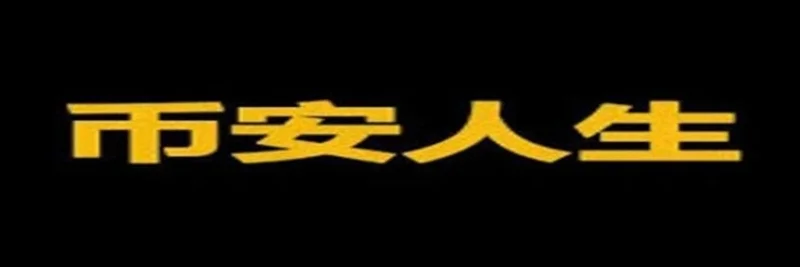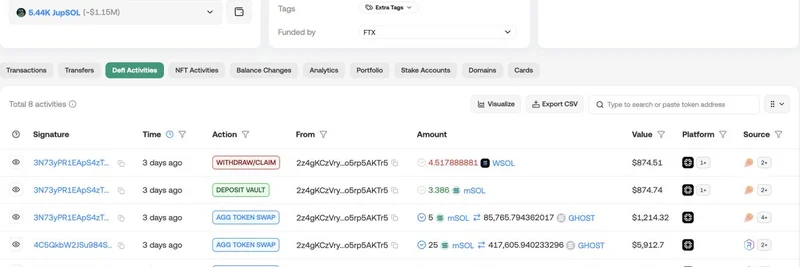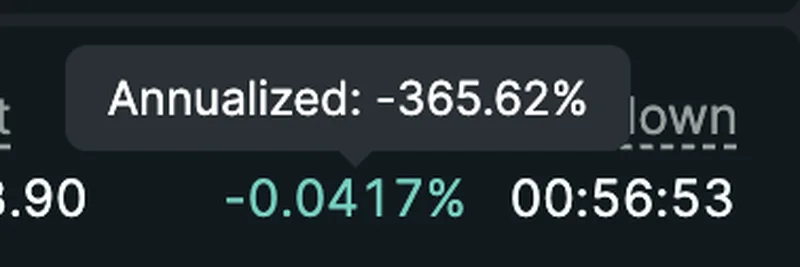Alright, let's dive into the details about the CTX token living on the BNB Chain. It's a space buzzing with activity, especially for meme tokens, and understanding what's what is super important. This report pulls together info from a few sources to give you a clearer picture of a specific CTX token, often linked to something called "ContextFlow."
Keep in mind, the world of meme tokens moves fast, and sometimes official info is hard to come by. We're piecing this together from public data and blockchain explorers like BscScan.
What is This CTX Token All About?
The token we're looking at has the contract address 0xc35afae095fb2a7eecdf190c320e68adf5cd9957. On the BNB Chain (yeah, the one formerly known as Binance Smart Chain or BSC), tokens usually follow the BEP-20 standard. This CTX token is no different – it's a BEP-20 token.
Now, about the name: it gets a bit confusing because there are other tokens out there using the "CTX" symbol. However, the token at this specific address is often referred to as "ContextFlow" by some sources like TheBitTimes.Com and ApeSpace, while others just call it "CTX Token."
The Lowdown on Token Details
Here’s what the data tells us about this particular CTX:
- Token Symbol: CTX
- Token Address:
0xc35afae095fb2a7eecdf190c320e68adf5cd9957(You can verify this on BscScan) - Blockchain: BNB Chain (BEP-20 standard)
- Potential Name: ContextFlow (though often just called CTX Token)
- Total Supply: Some sources report 100,000,000 CTX.
- Circulating Supply: Similarly, some reports state 100,000,000 CTX.
- Decimals: Likely 18, which is pretty standard for BEP-20 tokens.
What's the Purpose? (If There is One)
One source hints that ContextFlow has a rather ambitious goal: building a decentralized financial payment network. The idea is to create a new payment system on the blockchain, potentially using stablecoins algorithmically backed by CTX as a reserve currency. This would aim to enable programmable payments and help develop open financial infrastructure.
However, it's important to balance this reported purpose with the reality that concrete details about the project's team, whitepaper, or roadmap are pretty hard to find. This lack of official information is super common with meme tokens, making the stated purpose feel more like a potential vision than a confirmed, active development plan.
Market Vibes and Trading Spots
Getting solid, consistent market data for this CTX token is tricky. The numbers jump around a lot depending on where you look:
- Price: One source mentions a price around $0.0255.
- Market Cap: Another source puts ContextFlow's market cap at roughly $2.55 million, based on the supply and price. But an X post from April 23, 2025, suggests a market cap as low as $96.18K. See the discrepancy?
- Trading Volume: The reported 24-hour trading volume also varies widely, from around $710.67 to $13.96K (per the same X post).
- Liquidity: Reported liquidity is around $152.08K in one place, but low liquidity is generally inferred given the token's obscurity and low trading volumes, which can lead to significant price swings when trading.
This inconsistency in data is a major red flag and makes it hard to get a reliable pulse on the token's market status.
Where can you trade it? Like many BEP-20 tokens, it's available on decentralized exchanges (DEXs) on the BNB Chain, most notably PancakeSwap. You can often find trading data and pairs (like CTX/WBNB) on platforms like ApeSpace or DexScreener. There's no sign of it on major centralized exchanges like Binance or aggregators like CoinMarketCap or CoinGecko.
Looking Under the Hood (Contract Analysis)
Some technical checks on the contract at 0xc35afae095fb2a7eecdf190c320e68adf5cd9957 reveal a few things:
- Verified Contract: Yep, the source code is viewable and verified on BscScan.
- Audited: One source mentions a basic audit, but cautions that new tokens can sometimes mask audit issues. There's no publicly available audit report linked on BscScan.
- Taxes: Reportedly, there are 0% buy and sell taxes, which is good for traders.
- Mintable/Blacklist/Modifiable Balances: Functions that would allow creating new tokens, blocking wallets, or changing balances weren't found in the basic checks, which is generally a positive sign for decentralization.
- Ownership: It appears likely that ownership has been renounced, meaning no single entity has control over the contract parameters after deployment.
Who's Holding CTX?
Holder data can give clues about distribution. BscScan shows 5,855 holders, while another source suggests around 2,000. The top holders are worth noting: according to TheBitTimes.Com, two top wallets hold a significant percentage:
0xa91d805c74c83246a38b6e519acffd3786d2eff6: Holds about 3.00%0x5c6411370c2c5233522d949f2698d9c2073325c4: Holds about 0.97%
Furthermore, an X post from April 27, 2025, pointed out that 22% of the tokens are held across just 48 wallets. This concentration of tokens raises concerns about potential insider control or the risk of these holders selling large amounts, which could crash the price.
Ecosystem and the BNB Chain Vibe
The CTX token lives within the vibrant, but often chaotic, BNB Chain ecosystem. The BNB Chain is known for its fast transactions and lower fees compared to Ethereum, making it a popular home for DeFi projects and, yes, meme tokens.
It's super important to distinguish this ContextFlow CTX from other tokens on the BNB Chain that also use the "CTX" symbol. For example, there's Cryptox (CTX) which has its own ecosystem (games, wallets, etc.), and CTX Chain (CTX) with a different supply. Always double-check the contract address (0xc35afae095fb2a7eecdf190c320e68adf5cd9957) to be sure you're looking at the right token.
Based on the name "ContextFlow" and the general trends on BNB Chain, if the project is active, it might involve things like facilitating token swaps on a DEX (like PancakeSwap), providing liquidity to earn rewards, or even a governance model where token holders can vote on project decisions. But again, this is speculative without official sources.
What's the Community Buzz?
Checking social media, particularly X (formerly Twitter), is key for meme tokens. Sentiment for ContextFlow CTX seems mixed:
- Some X posts see it as a potential trading opportunity, highlighting its low market cap (though unverified) and potential for gains.
- Others, like @OnchainPolice, raise serious concerns about the concentrated ownership (22% in 48 wallets), hinting at insider activity.
- A post from @AlvaApp noted a price increase but warned it might be "overheating" based on technical indicators.
The main challenge here is the lack of an official social media presence or website for ContextFlow itself. The conversation happens mostly through third-party accounts and data platforms, which means you're relying on information that might not be directly from the project creators.
Okay, What Are the Risks?
Given all this, there are some pretty significant risks you should be aware of if you're looking at CTX:
- Lack of Transparency: No official website, whitepaper, or team details? Big red flag. It makes it hard to verify the project's legitimacy or long-term plans.
- Insider Control: That concentrated ownership (22% in 48 wallets) is a major concern. It means a small group could potentially manipulate the price or dump their tokens, causing a crash.
- No Public Security Audit: While one source mentioned a basic audit, there's no easily accessible audit report. This means the smart contract hasn't been thoroughly checked for vulnerabilities that could be exploited.
- Low Liquidity & High Volatility: With inconsistent and often low reported trading volumes, buying or selling significant amounts of CTX could lead to major price swings or difficulty executing trades at your desired price. Meme tokens are already volatile, and low liquidity amplifies this.
- Confusion with Other Tokens: The existence of multiple tokens named "CTX" on the same chain is a recipe for confusion and potential scams where people accidentally buy the wrong token.
- Data Inconsistencies: As highlighted earlier, the wild differences in reported price, market cap, and volume across sources make reliable analysis very difficult.
Tools to Track Meme Tokens Like CTX
Navigating the meme token world requires good tools. Platforms like GMGN.AI are designed for this, offering features to track, analyze, and even trade meme tokens across various chains, including BNB Chain. They provide real-time data, smart money tracking (seeing what big wallets are doing), security checks (looking for things like honeypots or high taxes), and automated trading options (note: this often requires linking services like Telegram, e.g., via https://t.me/gmgnaibot?start=i_fV1R5sZ5). GMGN.AI even has a dedicated page for this specific CTX token. Remember, they charge a 1% transaction fee but don't require subscriptions. Tools like these can be valuable for getting insights into tokens like CTX, but always use them as part of your broader research.
Wrapping It Up
The CTX token with contract address 0xc35afae095fb2a7eecdf190c320e68adf5cd9957 on the BNB Chain is linked to the name ContextFlow and might have aspirations of being a decentralized payment network. However, based on available public information, it currently looks and behaves a lot like a typical meme token.
It trades on DEXs like PancakeSwap, has a presence in conversations on X, and exhibits characteristics like price volatility and a lack of easily verifiable project details. The significant concerns here are the inconsistencies in reported market data, the concentration of tokens in a small number of wallets, the absence of a clear, official project presence, and the lack of a public security audit.
As an editor for Meme Insider, my advice is always to approach meme tokens with a healthy dose of skepticism. Do your homework, understand the risks – especially the potential for rapid price drops and the lack of underlying fundamentals or transparency – and never invest more than you can afford to lose. This report is for informational purposes only and definitely not financial advice!
Disclaimer: This research report is based on currently available public information as of April 28, 2025. The cryptocurrency market is super dynamic, and information can change rapidly. Meme Insider (meme-insider.com) is not responsible for any financial losses you might run into if you act on the info in this report. Seriously, this is not financial advice!




